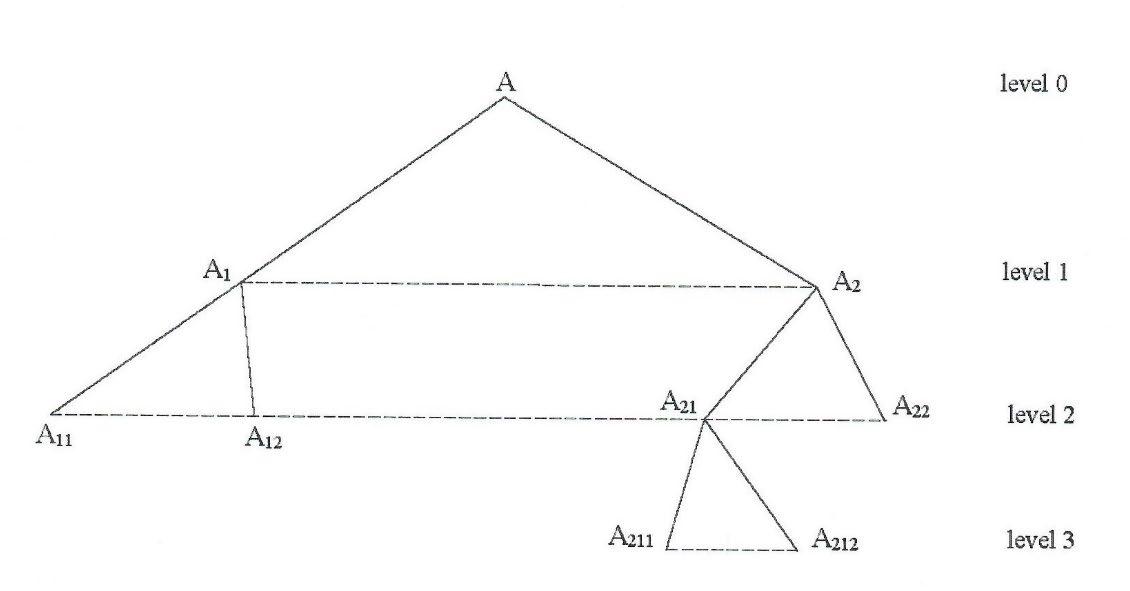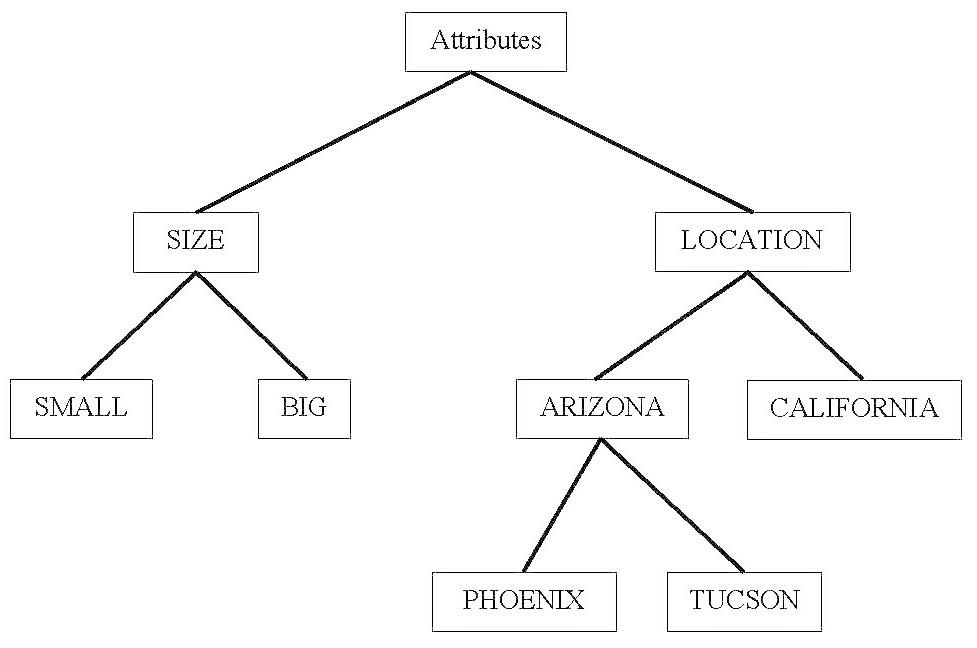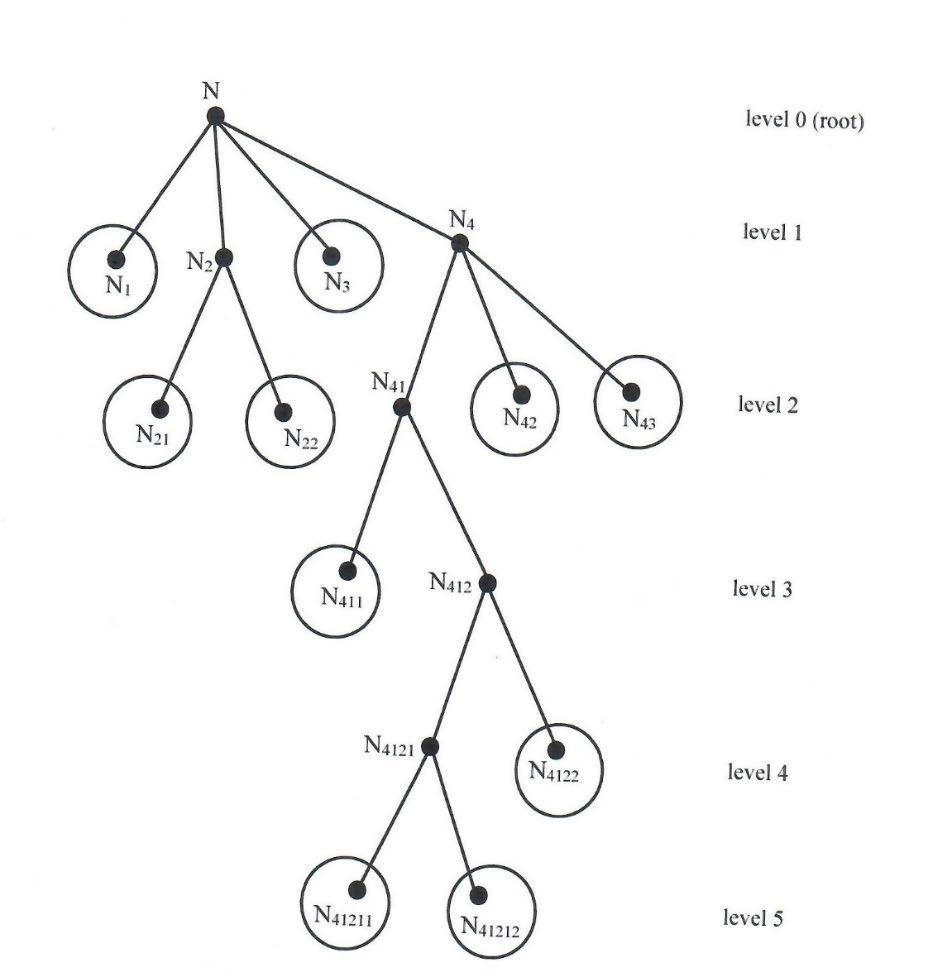
4 minute read
Real Example of IndetermSoft Set
from Practical Applications of IndetermSoft Set and IndetermHyperSoft Set and Introduction to TreeSoft Se
11. Extension of the MultiSoft Set to a HyperSoft Set
One introduces the empty-element φ to each set of attribute-values, and let denote 1 1 2 2{}, {},..., {} n n A A A A A Aφ φ φ = ∪ = ∪ = ∪ .
Advertisement
Let 1 2 1 2 (,,..., ) ...n n A A Aε ε ε ε= ∈ × × × ,
then
1 1 1 {}A A ε φ ∈ = ∪ means that either 1 1 Aε ∈ or 1 ε φ = (discarded) ; similarly for all
' i i i A A {}ε φ ∈ = ∪ , 1 i n≤ ≤ . Thus,
1 2 : ... () n F A A A PH × × × → is a hypersoft set.
12. Real Example of MultiSoft Set
We retake the previous example and adjust it to a MultiSoft Set.
Let H = {h1, h2, h3, h4, h5, h6, h7} a set of houses, and two attributes a1 and a2, where a1 = color, and its set of attribute-values A1 = {white, green, red}, and a2 = size, and its attribute-values
A2 = {small, big}. Let 1 2 A A A = ∪ = {white, green, red ; small, big}, and P(A) be the power set of A. Then :() () F PA PH → is defined as follows:
F(white) = {h1}, F(green, big) = {h4, h6}, F(big) = {h3, h5}.
13. Real MultiSoft Set extended to a HyperSoft Set
Let’s enlarge A1 and A2: ' 1A = {white, green, red, φ}, and ' 2A = {small, big, φ}
Then
' ' ' 1 2 : () F A A PH × → F’(white,φ) ≡ F(white) ={h1} (since the attribute-valueφ was discarded). F’(green, big) ≡ F(green, big) = {h4, h6}. F’(φ , big) ≡ F(big) = {h3, h5} (since the attribute-valueφ was discarded).
14. Generalization of MultiSoft Set to the TreeSoft Set
Let U be a universe of discourse, and H a non-empty subset of U, with P(H) the powerset of H. Let A be a set of attributes (parameters, factors, etc.), 1 2 {, ,..., } n A AA A =
, for integer n ≥ 1, where 1 2, ,..., n AA A are attributes of first level (since they have one-digit indexes).
Each attribute ,1 ,i A i n ≤ ≤ is formed by sub-attributes: 1 1,1 1,2{ , ,...}= A A A 2 2,1 2,2{ , ,...}A A A =
.,1 ,2 { , ,...}n n n = A A A
where , ijA are sub-attributes (or attributes of second level) (since they have two-digit indexes). Again, each sub-attribute , ijA is formed by sub-sub-attributes (or attributes of third level):
,, ijkA
And so on, as much refinement as needed into each application, up to sub-sub-…-sub-attributes (or attributes of m-level (or having m digits into the indexes):
12,,..., mii iA
Therefore, a graph-tree is formed, that we denote as Tree(A), whose root is A (considered of level zero), then nodes of level 1, level 2, up to level m.
We call leaves of the graph-tree, all terminal nodes (nodes that have no descendants).
Then the TreeSoft Set is:
:( ()) () F PTreeA PH → .
Tree(A) is the set of all nodes and leaves (from level 1 to level m) of the graph-tree, and ( ())PTreeA is the powerset of the Tree(A).
All node sets of the TreeSoft Set of level m are:
1 12 123 m121 , 1 2 ,, 1 2 3 ,,..., 1 2i (){ | 1,2,...}{ |, 1,2,...}{ |,, 1,2,...}...{ |,,..., 1,2,...} ii ii i ii i m TreeA A i A ii A ii i A ii i= = ∪ = ∪ = ∪ ∪ =
The first set is formed by the nodes of level 1, second set by the nodes of level 2, third set by the nodes of level 3, and so on, the last set is formed by the nodes of level m.
If the graph-tree has only two levels (m = 2), then the TreeSoft Set is reduced to a MultiSoft Set.
15. Example of TreeSoft Set of Level 3
Node of level 0 (the graph-tree root): A.
Nodes of level 1: A1, A2.
Nodes of level 2: A11, A12; A21, A22.
Nodes of level 3: A211, A212.
Whence Tree(A) = {A1, A2; A11, A12; A21, A22; A211, A212}.
The leaves are: A11, A12; A211, A212; A22. As we see, the leaves may have various levels, in this case: 2, or 3.
P�����������������(����)� is the powerset of ����������������(����). F: P�����������������(����)�→����(����) is a TreeSoft Set of Level 3.
Graph 1: TreeSoft Set of Level 3
16. Practical Example of TreeSoft Set of Level 3

Graph 2: Practical TreeSoft Set of Level 3
et’s consider H = {ℎ1,ℎ2,…,ℎ10} be a set of houses, and P(H) the powerset of H. And the set of attributes: A = {����1,����2}, where ����1 = size, ����2 = location. Then ����1 = {����11,����12} = {small, big}. ����2 = {����21,����22} = {Arizona, California}, American states. Further on, ����21 ={����211,����212} = {Phoenix, Tucson}, Arizonian cities. Let’s assume that the function F gets the following values: F(big, Arizona, Phoenix) = {ℎ9,ℎ10} F(big, Arizona, Tucson) = {ℎ1,ℎ2,ℎ3,ℎ4} F(big, Arizona) = all big houses from both cities, Phoenix and Tucson, = F(big, Arizona, Phoenix) ∪F(big, Arizona, Tucson)= {ℎ1,ℎ2,ℎ3,ℎ4,ℎ9,ℎ10}.
17. Properties of the TreeSoft Set
17.1. Theorem 1
F(node) includes all node’s descendants, and sub-descendants, then sub-sub-descendants, and so on up to the corresponding leaves.
From previous Example 15, one has: ����(����21)=����(����211)∪����(����212), and consequently ����(����12,����21)=����(����12,����211)∪����(����12,����212).
17.2. Theorem 2
Let ����∈����������������(����) be a node. N generates a SubTree(N) whose root is N itself. Then ����(����)=⋃����(����)�������������(����)� where ��������(����) are all leaves of the SubTree (N). From previous Example 15:



